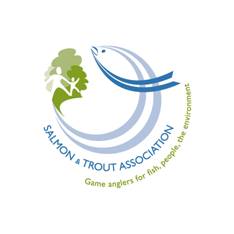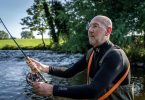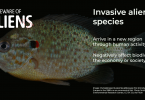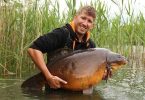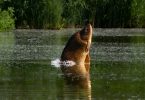* Major Salmon and Trout Association study of peer-reviewed science condemns current fish-farming practices as totally unsustainable
* Leading wild fisheries organisations call on Scottish govt. for immediate action
The Salmon & Trout Association (S&TA) today (March 22nd, 2010) publishes its ground-breaking summary report on scientific studies into the environmental impact of current salmon farming operations. It reveals a devastating catalogue of malpractice in the way salmon farming is impacting wild salmon, sea trout and the marine environment, and provides incontrovertible proof that it is a sword of Damocles suspended over some of Scotland’s most iconic natural resources. It accuses the multi-million pound salmon farming industry of precipitating an environmental disaster, and calls for a nine-point survival plan to be actioned immediately.
The report’s main findings provide evidence that:
- Fish farm parasites can kill young wild salmon and sea trout
Studies show as many as 80% of juvenile salmon and sea trout are killed by sea lice allowed to breed in massive numbers in open cage system salmon farms. Sea lice are a natural salmonid parasite, but infestations on this scale can kill. - Salmon farming could force wild salmon into extinction
Gene pools could be destroyed in decades by the inter-breeding of farmed fish escapees with natural populations – some Norwegian rivers already have breeding populations of up to 80% fish escaped from farms. It is impossible to prevent escapes from open cages, or for escapees to interbreed with wild fish stocks. Evidence shows that these hybrids do not thrive in the wild, and so could significantly impact native stocks, which within a few generations. - Salmon farming sewage can poison the sea bed
The effluent produced by farmed salmon, together with the chemicals and antibiotics used to treat fish, can become established in estuaries, lochs and inshore zones close to fish farms, smothering natural aquatic life and increasing nutrients to unnatural levels
Paul Knight, S&TA CEO, declares: “Aquaculture (fish farming) practiced sustainably can offer enormous benefits to mankind and significantly reduce the pressure on our precious wild oceanic stocks. But the scientific literature unequivocally demonstrates that fish farms, as presently constructed and operated, are having a disastrous impact on native fisheries, the wider environment and the many public benefits associated with it. Quite apart from the S&TA’s nine point action plan to counter impacts that our report shows are already scientifically proven – especially from sea lice and farm escapees – we urgently need more research into the effects of all the waste material and veterinary chemicals swilling about Scotland’s West Coastal waters and lochs, particularly with so many valuable shell fish stocks in the immediate area. ”
The S&TA, together with colleagues from Fish Legal, the Association of Scottish Fishery Boards (ASFB) and the Rivers and Fisheries Trusts of Scotland (RAFTS), is calling on the Scottish government to act before it is too late to save wild Scottish salmon and sea trout.
S&TA believes that a nine-point action plan must be implemented as a matter of urgency:
– The long term target of the industry and Scottish Government must be for the universal use of enclosed systems for rearing fish, therefore cutting out any interaction between farmed and wild salmon and sea trout. A timescale for this transition should now be agreed between Government, industry and wild fish organisations
– Meanwhile, the Precautionary Principle (as enshrined in EU legislation protecting species and habitats, and the basis of inter-Government agreements through the North Atlantic Conservation Organisation, signed up to by Scotland as a member of the EU delegation), should be adhered to at all times
– An effective lice dispersal model must be developed in order to assess acceptable maximum farm/area lice levels
– A list of ecologically and economically sensitive sites must be drawn up
– Sea-based salmon farms must be moved away from locations with significant salmon and sea trout migration runs, within estuaries, lochs and offshore. As a practical start, an experiment should be conducted by removing an individual farm from a sensitive site – agreed with wild fish organisations – and the effect on wild salmon and sea trout stocks monitored
– No new sites should be permitted in sensitive areas highlighted by the list above
– All new fish farm applications must be supported by independent Environmental Impact Assessments
– Salmon smolt farms should be banned from operating within any wild salmonid river, unless in enclosed systems
– The impact of escapees should be reduced by the mandatory stocking of sterile fish within an agreed timescale
 S&TA’s Head of Science, Janina Gray, adds, “it has been a sobering experience researching the evidence surrounding the interaction between salmon fish farming and wild fish stocks. The evidence is clear that aquaculture can have a significantly negative impact, in some areas, on wild salmon, sea trout and their environment. We must learn from the scientific evidence available, enforce the precautionary principle and take action before it’s too late. We now look forward to Dr Ken Whelan, of the Atlantic Salmon Trust, publishing his paper later in the spring, focussing on the impact of sea lice on wild salmonids.”
S&TA’s Head of Science, Janina Gray, adds, “it has been a sobering experience researching the evidence surrounding the interaction between salmon fish farming and wild fish stocks. The evidence is clear that aquaculture can have a significantly negative impact, in some areas, on wild salmon, sea trout and their environment. We must learn from the scientific evidence available, enforce the precautionary principle and take action before it’s too late. We now look forward to Dr Ken Whelan, of the Atlantic Salmon Trust, publishing his paper later in the spring, focussing on the impact of sea lice on wild salmonids.”
Paul Knight concludes: “it must be the Government’s statutory responsibility, and the industry’s moral one, to protect two of Scotland’s most valuable and iconic natural resources – wild salmon and sea trout – before it is too late. We will do everything possible to ensure their survival, and to this end we call upon the Scottish Government and salmon farming industry to respond to this challenge.”
For more information, please click here.

